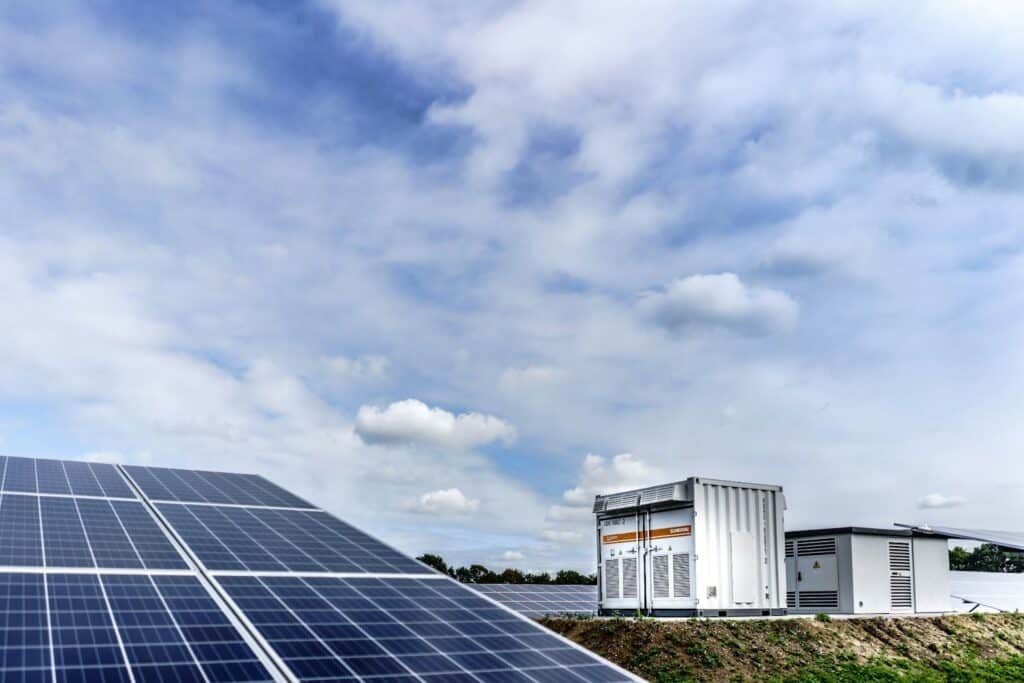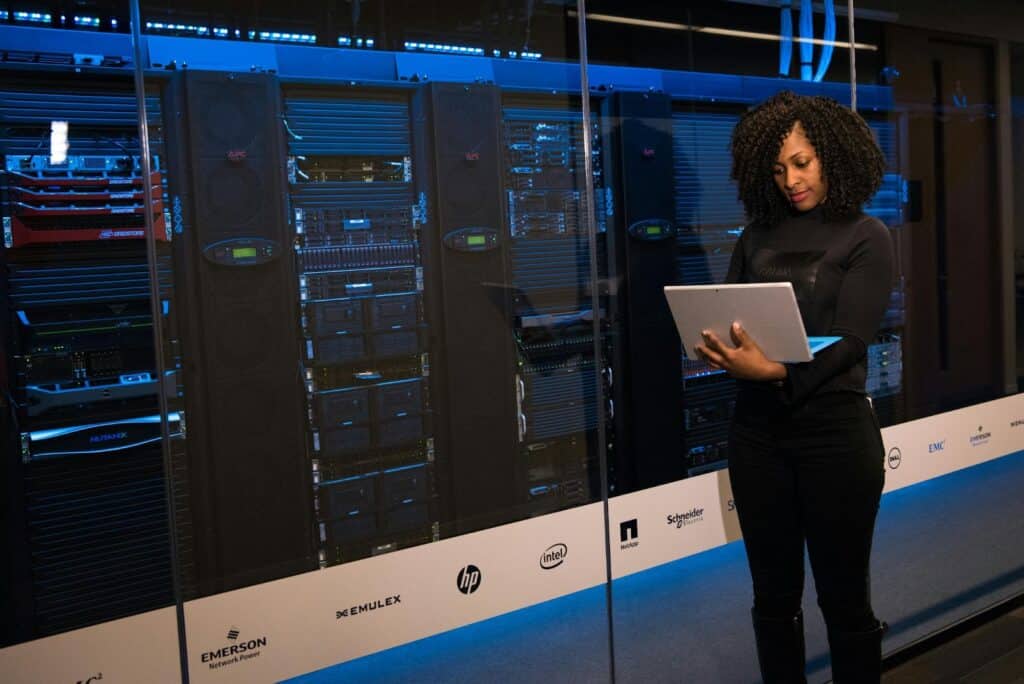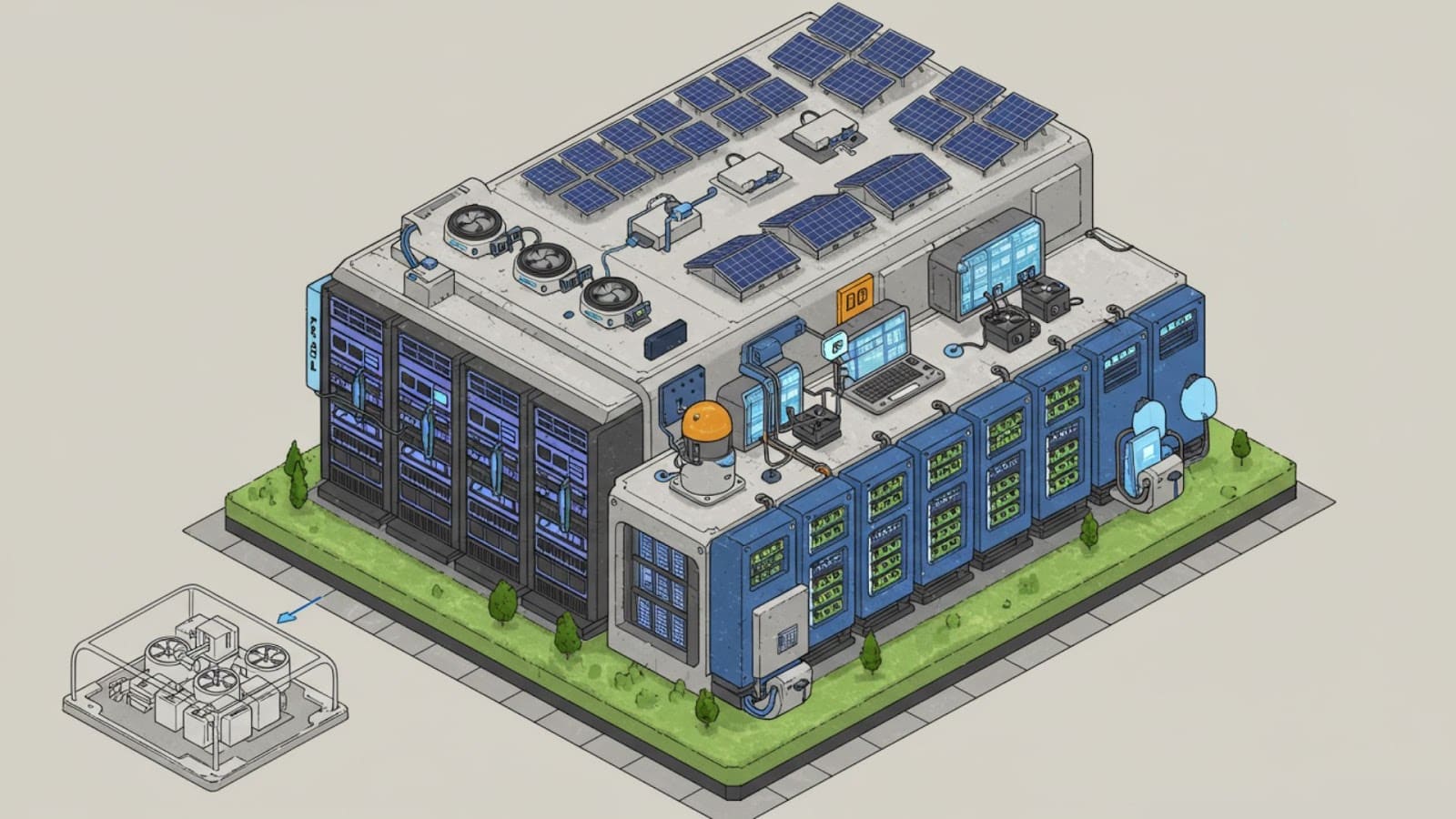Artificial intelligence infrastructure is reshaping global energy demand at an unprecedented pace. Data centers worldwide are projected to consume 945 terawatt-hours by 2030, more than doubling from current levels, with AI workloads driving the majority of this explosive growth. This surge creates both immense opportunities and critical challenges for organizations building AI infrastructure.
Selecting the right energy companies for AI data centers has become one of the most strategic decisions facing hyperscalers, enterprise data center operators, and technology companies worldwide. The stakes couldn’t be higher. Choosing the wrong energy partner can result in costly delays, operational disruptions, and missed market opportunities in the rapidly evolving AI landscape.
The AI Infrastructure Energy Crisis: Understanding the Scale
The artificial intelligence revolution has fundamentally altered the energy requirements for modern data centers. Unlike traditional computing workloads, AI operations demand massive computational power through densely packed graphics processing units that operate around the clock. The International Energy Agency reports that AI-focused data centers can draw as much electricity as power-intensive factories, such as aluminum smelters, but with much greater geographic concentration.
This concentration presents unique challenges for energy companies for AI data centers. Nearly half of all data center capacity in the United States clusters in just five regional areas, creating intense pressure on local electrical grids and transmission infrastructure. The result is a critical mismatch between soaring demand and available power supply, with some estimates suggesting that 20% of planned data center projects could face delays due to grid connection constraints.
The scale of energy growth required is staggering. In the United States alone, data centers are on track to account for nearly half of all electricity demand growth through 2030. This means energy procurement decisions made today will determine which organizations can scale their AI capabilities and which will be constrained by power limitations. The urgency has never been greater for developing comprehensive energy strategies that can support both current operations and future expansion plans.
Essential Criteria for Selecting Energy Companies for AI Data Centers
Choosing the right energy partner requires evaluating multiple critical factors that directly impact both operational success and long-term sustainability. Each criterion plays a vital role in ensuring your AI infrastructure can meet demanding performance requirements while maintaining cost-effectiveness and environmental responsibility.
Power Capacity and Scalability Infrastructure
The foundation of any successful AI data center energy partnership lies in the provider’s ability to deliver substantial power capacity with built-in scalability options. Modern AI workloads require baseline power densities that far exceed traditional data center requirements, often demanding 30-50 kilowatts per rack compared to the 5-10 kilowatts typical of conventional servers. Energy companies must demonstrate they can provide not just initial capacity but also seamless expansion capabilities as AI demands continue growing exponentially.
Successful energy partners typically offer modular power delivery systems that can scale from hundreds of megawatts to multi-gigawatt installations. They should provide detailed capacity roadmaps showing how additional power can be brought online as your operations expand, including specific timelines and infrastructure investment requirements.
The best providers also maintain strategic land positions near existing electrical transmission infrastructure, enabling faster deployment of additional capacity compared to competitors who must start development from scratch.
Grid Interconnection Capabilities and Timeline Management
Grid interconnection represents one of the most significant bottlenecks in AI infrastructure development, with connection timelines often extending 4-8 years in advanced economies. Goldman Sachs research indicates that this constraint is becoming increasingly severe as more organizations compete for limited transmission capacity. Energy companies that can navigate complex interconnection processes efficiently provide substantial competitive advantages.
Leading energy partners maintain strong relationships with transmission system operators and utility companies, often having pre-existing interconnection agreements or advanced positions in utility queues. They should have a proven track record of successfully completing major grid connections on schedule and within budget. Additionally, top-tier providers often invest in their own transmission infrastructure, reducing dependence on third-party utilities and providing greater control over project timelines.
Renewable Energy Portfolio and Sustainability Commitments
Environmental sustainability has evolved from a nice-to-have feature to a business-critical requirement for AI infrastructure. McKinsey analysis shows that leading technology companies are making ambitious carbon-neutral commitments that directly influence their energy procurement decisions. Energy companies must offer comprehensive renewable energy portfolios that can support these sustainability goals while maintaining operational reliability.
The most capable energy partners typically maintain diverse renewable generation assets, including solar, wind, and energy storage systems. They should provide detailed renewable energy certificates and transparent reporting on carbon intensity metrics.
Advanced providers also offer innovative solutions such as co-located renewable generation, battery storage systems, and green hydrogen capabilities that can provide carbon-free power even during periods when renewable generation is unavailable.

Financial Stability and Corporate Backing
AI infrastructure projects often require substantial upfront investments and long-term financial commitments spanning 10-20 years. Energy companies must demonstrate rock-solid financial stability and access to capital required for large-scale infrastructure development. The boom-and-bust nature of the energy industry means that partner selection requires careful evaluation of financial strength and corporate backing.
Reputable energy partners typically have investment-grade credit ratings, substantial balance sheet capacity, and backing from established financial institutions or major corporations. They should provide transparent financial disclosures and show experience managing complex, capital-intensive projects. Companies with strong parent company support or strategic partnerships often provide additional security and resource access compared to standalone developers.
Technical Expertise and Proven Track Record
The complexity of AI infrastructure energy systems demands partners with deep technical expertise across multiple domains, including electrical engineering, power systems design, cooling infrastructure, and grid integration. Energy companies must understand the unique requirements of AI workloads and design systems that optimize both performance and efficiency.
Successful energy partners maintain teams of experienced engineers who have completed similar projects and understand the technical nuances of high-density computing environments. They should provide case studies detailing successful deployments, including specific performance metrics such as uptime statistics, power quality measurements, and efficiency achievements. The best providers also invest in ongoing research and development to stay ahead of evolving AI infrastructure requirements.
RFP Best Practices for Energy Procurement Success

Developing effective procurement processes requires structured approaches that enable fair evaluation while encouraging innovative solutions from potential energy partners. Well-designed RFP processes can significantly improve project outcomes and reduce long-term operational risks.
Defining Clear Requirements and Performance Specifications
Successful energy procurement begins with comprehensive requirement definitions that provide potential partners with detailed information about your operational needs and performance expectations. Rather than simply specifying power quantities, effective RFP tips include defining specific performance parameters such as power quality tolerances, reliability requirements, and scalability timelines. Organizations should provide detailed load profiles showing expected power consumption patterns throughout different operational phases.
The most effective procurement documents also include information about future expansion plans, allowing energy companies to propose solutions that can accommodate growth efficiently. Requirements should specify both minimum acceptable performance levels and desired stretch goals, enabling providers to differentiate their offerings through superior capabilities. Including sustainability requirements and reporting expectations ensures that environmental considerations receive appropriate weight in vendor selection processes.
Evaluation Criteria Development and Scoring Methodologies
Procurement success depends heavily on establishing objective evaluation criteria that enable fair comparison between different energy company proposals. Effective evaluation frameworks typically weigh technical capabilities, financial strength, project experience, and cost considerations according to organizational priorities. The best procurement processes use detailed scoring matrices that enable systematic evaluation across multiple criteria simultaneously.
Leading organizations often structure evaluation criteria into categories such as technical solution quality, implementation timeline feasibility, financial strength indicators, and total cost of ownership projections. Each category should include specific metrics that can be objectively measured and compared. Procurement teams should also include provisions for evaluating innovative solutions that may not fit traditional criteria but offer significant potential advantages.
Timeline Management and Milestone Planning
Energy infrastructure projects require careful coordination across multiple phases, including design, permitting, construction, and commissioning. Effective procurement processes establish realistic timelines that account for potential delays while creating accountability mechanisms for staying on schedule. Project timelines should include specific milestones with associated deliverables and performance measurements.
The most successful procurement approaches include contingency planning for common delay scenarios such as permitting challenges, equipment delivery issues, or weather-related construction delays. Timeline development should also coordinate with broader AI infrastructure deployment schedules to ensure energy systems come online when needed to support computing infrastructure. Regular milestone reviews provide opportunities to address potential issues before they impact overall project delivery.
Technical Considerations to Meet AI Workload Energy Requirements

AI infrastructure energy systems must address unique technical challenges that differ significantly from traditional data center power requirements. Understanding these technical considerations helps ensure energy partners can deliver systems optimized for high-performance computing workloads.
Power Density and Distribution
AI workloads create power density challenges that push the boundaries of traditional electrical distribution systems. The dramatic increase in power density requires fundamentally different approaches to electrical distribution, including higher voltage distribution systems and specialized power delivery infrastructure.
Energy systems must accommodate rapid power fluctuations as AI workloads scale up and down dynamically. Unlike traditional server workloads that maintain relatively steady power consumption, AI training operations can experience significant power variations as different processing phases require varying computational intensity. Electrical systems must provide stable power delivery across these fluctuations while maintaining power quality standards required for sensitive computing equipment.
Advanced power distribution architectures often incorporate multiple redundancy levels and sophisticated monitoring systems that can detect and respond to power quality issues in real-time. The best energy partners design distribution systems with built-in expansion capabilities that can accommodate additional power without requiring complete infrastructure overhauls as AI operations scale.
Cooling Infrastructure Integration and Efficiency
High-density AI equipment generates substantial heat loads that require innovative cooling solutions integrated closely with power delivery systems. Traditional air-cooling approaches often prove inadequate for AI infrastructure, necessitating liquid cooling systems that can remove heat more efficiently. Energy partners must understand these cooling requirements and design power systems that can support both computing equipment and associated cooling infrastructure.
Integrated cooling and power systems can achieve significant efficiency improvements compared to separate systems designed independently. Advanced approaches include waste heat recovery systems that can redirect server heat for other facility uses, reducing overall energy consumption. The most sophisticated installations incorporate predictive cooling control systems that adjust cooling delivery based on anticipated workload patterns.
Energy partners should exhibit experience with diverse cooling technologies, including direct liquid cooling, immersion cooling, and hybrid air-liquid systems. They must also understand the power requirements for different cooling approaches and factor these requirements into overall system design and capacity planning.
Redundancy Requirements and Uptime Guarantees
AI infrastructure operations often require extremely high availability levels, with some applications demanding 99.99% uptime or better. These availability requirements drive redundancy specifications that significantly impact energy system design and cost structures. Energy partners must design systems with appropriate redundancy levels while balancing cost considerations and operational complexity.
Redundancy planning must address multiple potential failure modes, including equipment failures, planned maintenance requirements, and external grid disruptions. The most robust designs incorporate multiple independent power feeds, on-site backup generation, and sophisticated switching systems that can maintain operations during various failure scenarios. Energy storage systems play increasingly important roles in bridging power disruptions and enabling seamless transitions between different power sources.
Uptime guarantees should include specific performance metrics and financial penalties for failing to meet availability commitments. Leading energy partners typically offer service-level agreements with guaranteed uptime percentages backed by meaningful financial commitments that testify to their confidence in their system designs.
Financial and Strategic Partnership Considerations

Energy procurement for AI infrastructure requires evaluating long-term financial implications and strategic partnership potential beyond simple cost comparisons. These considerations often determine project success over multi-decade operational periods.
Total Cost of Ownership Analysis and Financial Modeling
Effective energy procurement requires comprehensive financial analysis that extends beyond initial capital costs to include long-term operational expenses, maintenance requirements, and potential future upgrades. Total cost of ownership models should incorporate energy price projections, equipment replacement schedules, and operational efficiency improvements over time.
Leading organizations develop sophisticated financial models that can evaluate different pricing structures, including fixed-price contracts, variable pricing arrangements, and hybrid approaches that combine multiple pricing mechanisms. These models should also account for potential changes in energy markets, regulatory requirements, and technological advancements that could impact long-term costs.
Risk assessment represents a critical component of financial evaluation, including analysis of potential cost overruns, schedule delays, and performance shortfalls. The best financial models incorporate Monte Carlo analysis or other statistical approaches that can quantify probability distributions for different cost outcomes and enable more informed decision-making.
Contract Structure Options and Risk Allocation
Energy contracts for AI infrastructure typically involve complex arrangements that must address multiple risk factors and operational requirements. Contract structures should clearly define responsibilities for different aspects of system design, construction, operation, and maintenance while providing appropriate risk allocation between parties.
Power purchase agreements represent one common contracting approach that can provide cost predictability while transferring operational risks to energy partners. Alternative structures include build-own-operate arrangements, joint venture partnerships, and hybrid models that combine different approaches. Each structure offers different advantages depending on organizational capabilities and risk tolerance levels.
The most effective contracts include detailed performance specifications with associated remedies for non-compliance. They should also incorporate change management processes that can accommodate evolving requirements as AI infrastructure needs change over time. Flexibility provisions enable contract modifications without requiring complete renegotiation when operational requirements evolve.
Frequently Asked Questions
What are the typical lead times for major AI data center energy projects? Energy infrastructure for large-scale AI data centers typically requires 3-7 years from initial planning to full operational status. This timeline includes environmental permitting, grid interconnection processes, construction, and commissioning phases. Projects with existing grid connections or pre-permitted sites can often significantly reduce these timelines.
How do renewable energy requirements impact energy company selection? Many organizations now require 100% renewable energy for their AI infrastructure operations. This requirement significantly limits the pool of qualified energy partners to those with substantial renewable generation portfolios and grid-scale storage capabilities. Companies should evaluate both current renewable capacity and planned expansion projects when assessing potential partners.
What power densities should energy systems support for future AI workloads? Current AI infrastructure typically requires 30-50 kilowatts per rack, but next-generation systems may demand 100+ kilowatts per rack. Energy partners should design systems with expansion capabilities that can accommodate these increasing power densities without requiring complete infrastructure replacement.
How important is geographic location in energy partner selection? Geographic location directly impacts grid access, renewable energy availability, cooling requirements, and regulatory environments. Energy partners with experience in multiple regions can provide more flexible deployment options and help organizations access the most favorable operating environments for their specific requirements.
What role does energy storage play in AI infrastructure energy systems? Energy storage systems provide multiple benefits, including grid stability, renewable energy integration, and backup power capabilities. Large-scale battery systems can store excess renewable generation for use during peak demand periods and provide rapid response capabilities for maintaining power quality during grid disturbances.
Securing Your AI Infrastructure Energy Future
The rapid evolution of artificial intelligence infrastructure creates both unprecedented opportunities and significant energy challenges that require strategic planning and expert partnerships. Organizations that develop comprehensive energy strategies and select the right partners will gain substantial competitive advantages in deploying and scaling AI capabilities. Those who delay these critical decisions risk facing capacity constraints, cost overruns, and operational limitations that could significantly impact their AI ambitions.
Successful energy procurement combines thorough technical evaluation, comprehensive financial analysis, and strategic partnership development. The complexity of modern AI infrastructure energy systems demands partners with proven expertise, substantial financial resources, and commitment to long-term operational excellence. As AI continues to reshape technology landscapes, energy infrastructure decisions made today will determine which organizations can fully capitalize on artificial intelligence opportunities.174 Power Global brings together the technical expertise, financial strength, and renewable energy focus required for next-generation AI infrastructure development. Our team combines deep experience in large-scale energy project development with a comprehensive understanding of high-performance computing requirements. Contact us today to discover how our energy solutions can power your AI infrastructure ambitions.



